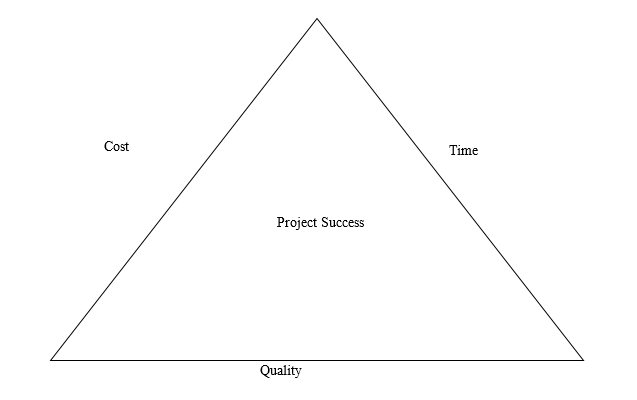Evaluating Project Success
INTRODUCTION
The Project Management Institute (2008a, p. 434) defines a project as a transitory operation undertaken to develop a unique product or service, which will go on to provide extra value for the project owner(s). Two things are clearly highlighted in this definition: the time aspect of a project and the fact that the project has to provide value to the owners. All projects are time bound, hence they must have a start time and an end time. At the end of every project, the desired values and outcomes must also be delivered.
Just like any business or corporate operation, projects can either be deemed as successful or as a failure. This paper considers the different indices that are looked at when evaluating project success.
DISCUSSION
Projects are designed for specific purposes, the execution and deliverables from a project are evaluated in the bid to ascertain whether that particular project was successful or not.
The traditional project management industry has been evaluating project success based on the iron triangle approach; time, cost and quality (Collins and Baccarini, 2004), as represented in the figure below.

Figure 1: Constraints of project success
Researchers have identified the connection amongst these 3 elements; it is impossible to alter one of these elements without affecting one or both of the other elements (El-Rayes and Kandil, 2005). For example, the project owner cannot reduce the deadline and have the project delivered in a shorter timeframe without a corresponding increase in cost or / and drop in the quality of the deliverables. A trade-off is usually experienced when the team tries to alter the project success constraints (Khang and Myint, 1999).
Time Element
Projects are different from the day-to-day operations carried out by an organisation. They have strictly defined duration periods, spanning the planning, execution, and closure phases. Considering the time element alone, a project is a success when it is delivered on or before the stipulated deadline, which was agreed upon by the project owners, irrespective of possible implications in terms of project cost and quality of deliverables.
Cost Element
This element considers the project financials; the total expenditure incurred in delivering a project. All projects have a budget, this is usually determined and agreed upon before the execution phase. Costs are incurred from the resources utilised in planning and executing the project, both human and material resources. As a criterion for project success, the cost element is achieved when the project is delivered within the agreed project budget. Another example of the trade-off experienced amongst the project constraints is when a project owner reduces the project budget. This could be reflected in the number of available personnel on the project. This will either result in the extension of the project deadline (i.e., delayed delivery of the project) or / and the compromised quality of the project deliverables.
Quality Element
This element evaluates how well the project deliverables performed side by side the project owner’s requirements and specifications. However, Neal (1995) in his research highlighted that project owners are very susceptible to making changes to the initial project requirements and specifications during the implementation / execution phase of the project. This is generally termed as scope creep (Ajmal, Khan and Al-Yafei, 2019). On this front alone, a project is termed successful when all the individual deliverables embedded in the project are in line with the owner’s desired requirements and specifications, this could be in the form of physical properties (length, breadth, weight, speed, colour etc.), it could also be in the form of user experience (e.g., features on a mobile application).
These three constraints have helped in measuring project success. However, over the years, different researchers and project management experts have presented their cases for expanding the constraints for measuring project success beyond these three elements. For example, Shenhar’s model considers project success from a different perspective; one that investigates the benefits received by the project’s relevant interested parties, i.e., the stakeholders (Shenhar et al., 2001). The International Organisation for Standardisation (2015) defines stakeholders as relevant interested parties; an individual or a group of individuals that are directly or indirectly affected by the success or failure of an enterprise. In the case of a corporate organisation execu
Our Advantages
Quality Work
Unlimited Revisions
Affordable Pricing
24/7 Support
Fast Delivery